Sat Mag
End of the journey of ‘Protector of Delhi’– Dilip Kumar
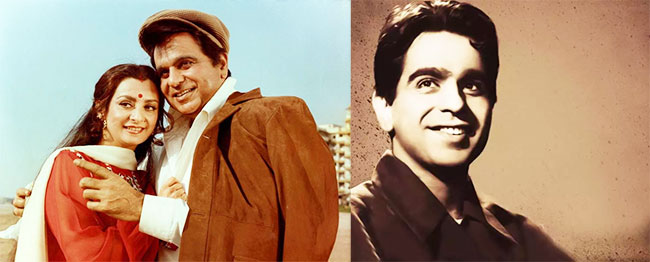
By T.K. Premadasa
In commemoration of the centennial celebrations of the Indian Cinema, an exclusive coverage with a lovely photograph of Dilip Kumar, Amithab Bachchan and Sharuck Khan, the three legends of the Indian Silver Screen appeared in the special issue of the Film Fare Magazine published on 24th of April, 2013. Amitab Bachchan and Sharuck Khan have openly expressed that it was a historical milestone in their career to have jointly appeared with this greatest Legend Dilip Kumar whom they highly respect for his excellence.
Dilip, with his outstanding contribution to the Indian cinema during the last several decades, was actively engaged in films even during his last days. He, released his autobiography named “Substance and the Shadow’’ in 2014 which covered his personal life story with everlasting experience on the Indian Silver Screen. In a salutary tribute to his unsurpassed performance as the Living Legend of the Indian Cinema, he was rightly honoured with Padma Vibhushan National Award in 2015 by the Government of India, on his 93rd Birthday.
This legendary jewel of the Indian Screen ever created by Bollywood passed away on 7th July 2021 at the age of 98, making the whole world of cinema fans grieve by his loss. He blessed with innate talents and skills which was portrayed in whatever character he played during the last four decades from the 1940s till 80s, he created history at the pinnacle of its glory on the Silver Screen.
Dilip Kumar was born on 11th December 1922 to a Hindi speaking family of Afghan origin with 12 children, in Qissa Khwani Bazaar in Peshawar, Pakistan. It was originally known as the North West Frontier Province in British India. This future world renowned film star on the Indian Screen, popularly known as Dilip Kumar was named Muhammad Yusuf Khan by his father Ghulam Sarwar, a leading businessmen dealing in fruits in Peshawar.
Young Yusuf Khan made his filial contribution to his family in assisting his father to earn their living on his business of fruits after the family moved to Bombay (Mumbai) in the early 1930s. It is believed that Yusuf Khan later worked in a cafeteria in Pune to support his family. Many interesting stories have been written about his entry into Indian Cinema.
Exclusive credence is bestowed on late Devika Rani the famous Indian actress in the 1930s and the 40s for her prescient introduction of Dilip Kumar to the Indian Screen. She was a partner of of Bombay Talkies Ltd of India that produced nearly 102 films. This company was instrumental in introducing not only Dilip but also Ashok Kumar, Mehboob, Raj Kapoor and a few other leading film stars, including Madhubala the veteran Queen of the Silver Screen who continued a long time love affair with Dilip Kumar.
This energetic character Dilip happened to travel to Nainital on a business trip, while Devika Rani too had gone to Nainatal with her film Director Amiya Chakravarthy searching for attractive locations for her next movie since the region of Nainatal was a natural beauty in the hill country of Uttara Pradesh. It was a miracle that these two met each other on the same route and Devika Rani unwittingly stumbled upon Yusuf. Devika instantly tendered her apology to Yusuf as it was her fault. She gave him her visiting card and promised that she would call him back. After the business deal Yusuf returned to Pune to work in the cafeteria. He was very much interested in meeting Devika Rani as she was so popular and an influential actress in the country. In the absence of a positive response from her, Yusuf traveled to Bombay Talkies Ltd which had been closed that day being a Sunday. However he was fortunate to meet the Production Secretary of the company S.Guruswamy outside the studio who most generously made an appointment for Yusuf to meet Devika Rani the next day. Accordingly, he was interviewed by Devika Rani who was indisputably admired by his attractive personality and potential. Consequently, he was given certain documents in respect of a contract agreement for signature of what he thought was a contract to run a cafeteria at the Bombay Talkies Ltd. But it was the contract of him being selected to play a leading role in their next film Jawar Bhata produced by Bombay Talkies Ltd. His innate talents with strength and confidence conquered the admiration of Devika Rani.
Entrusting the responsibility of playing a major character in the film on condition that he should change his name, Devika Rani proposed three names as Jewangir, Vasudev or Dilip Kumar of which he preferred the name Dilip Kumar meaning “Protector of Delhi”. But it is the putative factor that this popular name loved by the fans around the globe had been decided by a great Indian poet Baghawati Charan Verma.
After his first film Jawar Bhata, directed by Amiya Chakravarthy was screened in 1944, Dilip Kumar’s second movie was Pratima (1945) directed by Pardi Jairaj. It was a hallmark at the beginning of his career to play the major role with Indian legendary singer and actress Noor-Jehan in his fourth film Jugnu (1947). Inspired by his overwhelming popularity acclaimed through indefatigable efforts, he was offered to play a role with Raj Kapoor in the film named Andaz which became a hit movie crowning Dilip Kumar’s the brightest star in Hindi Cinema. He proved his brilliance literally in playing the major role of different characters in as many as 60 films from 1943 to 1998 ending his career with the film Qila in 1998. Stellar performance during a period of 55 years conquered the hearts of movie fans both locally and abroad with fascinating favourites as Madhumathi, Aan, Babul, Tarana, Devdas, Daag, Footpath, Andaz, Azaad, Leader, Ram oAur Sham, Kohinoor, Mughal E Azam, Ganga Jamuna, Naya Daur, etc. He has influenced fans world over reaching to the apex of its glory as the shining Super Star of the Hindi Silver Screen. It is a known fact that aproximately 11 films in which Dilip Kumar made his contribution playing the main role unreleased or incomplete due to reasons unknown.
An invitation from the great British Film Director David Lean to play the main character as Sherif Ali in the renowned film “Lawrence of Arabia” was not accepted by Dilip Kumar according to sources from the Indian film industry. Subsequently, Egyptian Actor Omar Sharif was selected for the role of Sherif Ali.
Ganga Jamuna
the only film produced by Dilip Kumar became a box office hit with lovely songs still resonating in our ever lasting memories. He directed the film Kalinga, which was a manifestation of his vast knowledge of the film industry. It was rather unfortunate that this film was not released.
Award winning actresses Noorjehan, Madhubala, Vyjayanthimala, Meena Kumari, Nutan, Nargis, Saira Banu and many others of the Indian cinema played the opposite roles with Dilip Kumar. Asha Parekh and Sadana could not act with Dilip. Suraiya and Malasingh refused to act with him.
It was his indomitable popularity with lovely composition of innovative musical brilliancy of great Indian musicians that attracted a capacity audience at each and every cinema just by the mention of the name Dilip Kumar at that time. The famous film Kohinoor is a case in point.
It is believed that the most romantic love affair heard from the Hindi Silver Screen has been the close relationship clandestinely carried on between Dilip and Madhubala who was later married to Kishor Kumar, the famous playback Singer cum actor. Coincidentally, Madhubala was also introduced to Hindi cinema by Devika Rani.
Dilip and Madhubala played the two opposite main roles in the film Tarana. Their increasing attachment tempted Madhubala to offer a bunch of red roses, the symbolic feelings of love to Dilip sensing her attraction towards him during the production of Tarana. The affair continued to last for nearly 5 years. These two veteran film stars were selected for leading roles in Naya Daur by Director B.R. Chopra. Chopra wanted Dilip and Madhubala to fly to Bhopal for shooting scheduled for a long stay. Unfortunately Madhubala’s father rejected the request as the location was not safe and thus Chopra was compelled to replace Madhubala with Vyjayanthimala. The dispute ended up in a Court of Law. Eventually the most long standing romantic love affair of the Indian cinema brought an unbearable end to both parties. It is said that they never spoke to each other than engaging in the dialogues in Mogul E Asam where they played major roles in the film. Nevertheless, her sister recently mentioned to the media that Madhubala loved Dilip Sahab till the day she died at the age of 36.
Dilip Kumar was 44 years of age when he got married to 22-year-old Beauty Queen film star Saira Banu in 1966. Their married life brilliantly blooming with happiness and harmony for the last 55 years is one of the longest lasting marriages of success in Bollywood cinema.
Dilip has received many awards for his brlilliant performances throughout his career. He became the first film star to win Filmfare Award for Best Actor for his role of Shankar played in Daag in 1954. Being nominated 19 times for the Best Actor at the Filmfare Award, he was repeatedly crowned the Best Actor, eight times for his stellar performances in Daag, Azaad, Devdas, Naya Daur, Leader, Kohinoor, Ram aur Shyam and Shakthi a record equaled by the leading Star on Hindi Screen Sharhrukh Khan by 2011. Special feature is that he set an unprecedented record in winning the prestigious Filmfare Award three consecutive years in 1956, 1957 and 1958.
He was honoured with the Filmfare Lifetime Achievement Award in 1993, NTR National Award in 1997, Zee Cine Awards 2001, IIFA Award For Outstanding Contribution To Indian Cinema 2004, Lifetime Achievement Award of CNN-IBN India in 2009. In honour of his excellent contribution he was titled the Sherif of Mumbai in 1980 and honoured with Padma Vibhushan of Indian Nation in 1991 and Dadasaheb Phalke Award in 1994 the highest national award for cinematic excellence in India. In 1997 Dilip was presented with Nishan –e- Pakistan, the highest civilian Award in Pakistan.
Dilip Kumar entered into politics in early 2000 and was elected a member of the Lok Sabha at the general elections held in 2000.
Dilip will have a special place reserved for him in the history of world cinema. This is evident from the excellent comments made by the great Indian artistes on the legendary actor. The legendary actor of the next generation, Amithab Bachchan quoted Dilip as the greatest actor to ever emerge on the Indian screen and Satyajith Ray emphasised that ‘’Dilip Kumar was a brilliant actor and can be termed as the ‘Ultimate Actor in Method Acting.”
(The writer is the former Head of Corporate Affairs and Communications of Sri Lanka Export Development Board. He can be reached on
t.k.premadasa@gmail.com )
Sat Mag
October 13 at the Women’s T20 World Cup: Injury concerns for Australia ahead of blockbuster game vs India
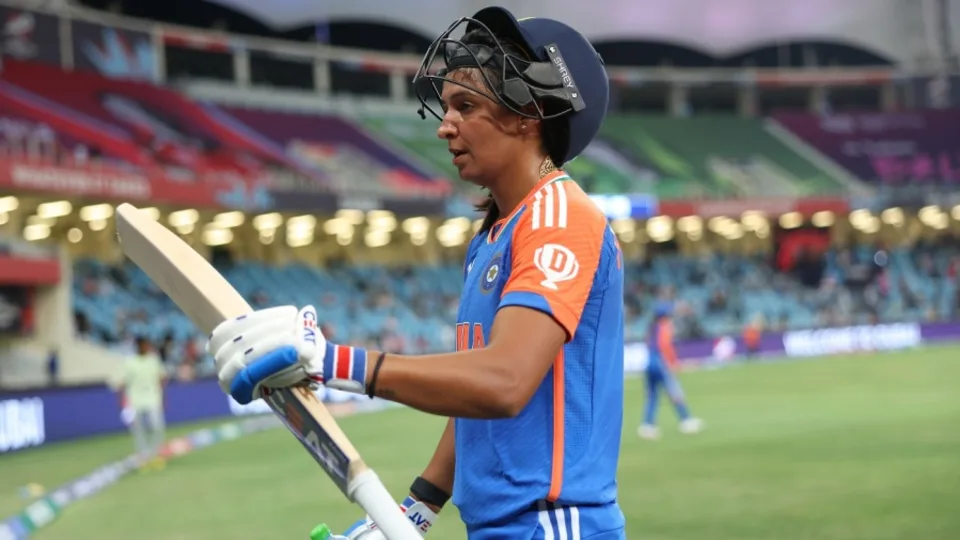
Australia vs India
Sharjah, 6pm local time
Australia have major injury concerns heading into the crucial clash. Just four balls into the match against Pakistan, Tayla Vlaeminck was out with a right shoulder dislocation. To make things worse, captain Alyssa Healy suffered an acute right foot injury while batting on 37 as she hobbled off the field with Australia needing 14 runs to win. Both players went for scans on Saturday.
India captain Harmanpreet Kaur who had hurt her neck in the match against Pakistan, turned up with a pain-relief patch on the right side of her neck during the Sri Lanka match. She also didn’t take the field during the chase. Fast bowler Pooja Vastrakar bowled full-tilt before the Sri Lanka game but didn’t play.
India will want a big win against Australia. If they win by more than 61 runs, they will move ahead of Australia, thereby automatically qualifying for the semi-final. In a case where India win by fewer than 60 runs, they will hope New Zealand win by a very small margin against Pakistan on Monday. For instance, if India make 150 against Australia and win by exactly 10 runs, New Zealand need to beat Pakistan by 28 runs defending 150 to go ahead of India’s NRR. If India lose to Australia by more than 17 runs while chasing a target of 151, then New Zealand’s NRR will be ahead of India, even if Pakistan beat New Zealand by just 1 run while defending 150.
Overall, India have won just eight out of 34 T20Is they’ve played against Australia. Two of those wins came in the group-stage games of previous T20 World Cups, in 2018 and 2020.
Australia squad:
Alyssa Healy (capt & wk), Darcie Brown, Ashleigh Gardner, Kim Garth, Grace Harris, Alana King, Phoebe Litchfield, Tahlia McGrath, Sophie Molineux, Beth Mooney, Ellyse Perry, Megan Schutt, Annabel Sutherland, Tayla Vlaeminck, Georgia Wareham
India squad:
Harmanpreet Kaur (capt), Smriti Mandhana (vice-capt), Yastika Bhatia (wk), Shafali Verma, Deepti Sharma, Jemimah Rodrigues, Richa Ghosh (wk), Pooja Vastrakar, Arundhati Reddy, Renuka Singh, D Hemalatha, Asha Sobhana, Radha Yadav, Shreyanka Patil, S Sajana
Tournament form guide:
Australia have three wins in three matches and are coming into this contest having comprehensively beaten Pakistan. With that win, they also all but sealed a semi-final spot thanks to their net run rate of 2.786. India have two wins in three games. In their previous match, they posted the highest total of the tournament so far – 172 for 3 and in return bundled Sri Lanka out for 90 to post their biggest win by runs at the T20 World Cup.
Players to watch:
Two of their best batters finding their form bodes well for India heading into the big game. Harmanpreet and Mandhana’s collaborative effort against Pakistan boosted India’s NRR with the semi-final race heating up. Mandhana, after a cautious start to her innings, changed gears and took on Sri Lanka’s spinners to make 50 off 38 balls. Harmanpreet, continuing from where she’d left against Pakistan, played a classic, hitting eight fours and a six on her way to a 27-ball 52. It was just what India needed to reinvigorate their T20 World Cup campaign.
[Cricinfo]
Sat Mag
Living building challenge

By Eng. Thushara Dissanayake
The primitive man lived in caves to get shelter from the weather. With the progression of human civilization, people wanted more sophisticated buildings to fulfill many other needs and were able to accomplish them with the help of advanced technologies. Security, privacy, storage, and living with comfort are the common requirements people expect today from residential buildings. In addition, different types of buildings are designed and constructed as public, commercial, industrial, and even cultural or religious with many advanced features and facilities to suit different requirements.
We are facing many environmental challenges today. The most severe of those is global warming which results in many negative impacts, like floods, droughts, strong winds, heatwaves, and sea level rise due to the melting of glaciers. We are experiencing many of those in addition to some local issues like environmental pollution. According to estimates buildings account for nearly 40% of all greenhouse gas emissions. In light of these issues, we have two options; we change or wait till the change comes to us. Waiting till the change come to us means that we do not care about our environment and as a result we would have to face disastrous consequences. Then how can we change in terms of building construction?
Before the green concept and green building practices come into play majority of buildings in Sri Lanka were designed and constructed just focusing on their intended functional requirements. Hence, it was much likely that the whole process of design, construction, and operation could have gone against nature unless done following specific regulations that would minimize negative environmental effects.
We can no longer proceed with the way we design our buildings which consumes a huge amount of material and non-renewable energy. We are very concerned about the food we eat and the things we consume. But we are not worrying about what is a building made of. If buildings are to become a part of our environment we have to design, build and operate them based on the same principles that govern the natural world. Eventually, it is not about the existence of the buildings, it is about us. In other words, our buildings should be a part of our natural environment.
The living building challenge is a remarkable design philosophy developed by American architect Jason F. McLennan the founder of the International Living Future Institute (ILFI). The International Living Future Institute is an environmental NGO committed to catalyzing the transformation toward communities that are socially just, culturally rich, and ecologically restorative. Accordingly, a living building must meet seven strict requirements, rather certifications, which are called the seven “petals” of the living building. They are Place, Water, Energy, Equity, Materials, Beauty, and Health & Happiness. Presently there are about 390 projects around the world that are being implemented according to Living Building certification guidelines. Let us see what these seven petals are.
Place
This is mainly about using the location wisely. Ample space is allocated to grow food. The location is easily accessible for pedestrians and those who use bicycles. The building maintains a healthy relationship with nature. The objective is to move away from commercial developments to eco-friendly developments where people can interact with nature.
Water
It is recommended to use potable water wisely, and manage stormwater and drainage. Hence, all the water needs are captured from precipitation or within the same system, where grey and black waters are purified on-site and reused.
Energy
Living buildings are energy efficient and produce renewable energy. They operate in a pollution-free manner without carbon emissions. They rely only on solar energy or any other renewable energy and hence there will be no energy bills.
Equity
What if a building can adhere to social values like equity and inclusiveness benefiting a wider community? Yes indeed, living buildings serve that end as well. The property blocks neither fresh air nor sunlight to other adjacent properties. In addition, the building does not block any natural water path and emits nothing harmful to its neighbors. On the human scale, the equity petal recognizes that developments should foster an equitable community regardless of an individual’s background, age, class, race, gender, or sexual orientation.
Materials
Materials are used without harming their sustainability. They are non-toxic and waste is minimized during the construction process. The hazardous materials traditionally used in building components like asbestos, PVC, cadmium, lead, mercury, and many others are avoided. In general, the living buildings will not consist of materials that could negatively impact human or ecological health.
Beauty
Our physical environments are not that friendly to us and sometimes seem to be inhumane. In contrast, a living building is biophilic (inspired by nature) with aesthetical designs that beautify the surrounding neighborhood. The beauty of nature is used to motivate people to protect and care for our environment by connecting people and nature.
Health & Happiness
The building has a good indoor and outdoor connection. It promotes the occupants’ physical and psychological health while causing no harm to the health issues of its neighbors. It consists of inviting stairways and is equipped with operable windows that provide ample natural daylight and ventilation. Indoor air quality is maintained at a satisfactory level and kitchen, bathrooms, and janitorial areas are provided with exhaust systems. Further, mechanisms placed in entrances prevent any materials carried inside from shoes.
The Bullitt Center building
Bullitt Center located in the middle of Seattle in the USA, is renowned as the world’s greenest commercial building and the first office building to earn Living Building certification. It is a six-story building with an area of 50,000 square feet. The area existed as a forest before the city was built. Hence, the Bullitt Center building has been designed to mimic the functions of a forest.
The energy needs of the building are purely powered by the solar system on the rooftop. Even though Seattle is relatively a cloudy city the Bullitt Center has been able to produce more energy than it needed becoming one of the “net positive” solar energy buildings in the world. The important point is that if a building is energy efficient only the area of the roof is sufficient to generate solar power to meet its energy requirement.
It is equipped with an automated window system that is able to control the inside temperature according to external weather conditions. In addition, a geothermal heat exchange system is available as the source of heating and cooling for the building. Heat pumps convey heat stored in the ground to warm the building in the winter. Similarly, heat from the building is conveyed into the ground during the summer.
The potable water needs of the building are achieved by treating rainwater. The grey water produced from the building is treated and re-used to feed rooftop gardens on the third floor. The black water doesn’t need a sewer connection as it is treated to a desirable level and sent to a nearby wetland while human biosolid is diverted to a composting system. Further, nearly two third of the rainwater collected from the roof is fed into the groundwater and the process resembles the hydrologic function of a forest.
It is encouraging to see that most of our large-scale buildings are designed and constructed incorporating green building concepts, which are mainly based on environmental sustainability. The living building challenge can be considered an extension of the green building concept. Amanda Sturgeon, the former CEO of the ILFI, has this to say in this regard. “Before we start a project trying to cram in every sustainable solution, why not take a step outside and just ask the question; what would nature do”?
Sat Mag
Something of a revolution: The LSSP’s “Great Betrayal” in retrospect
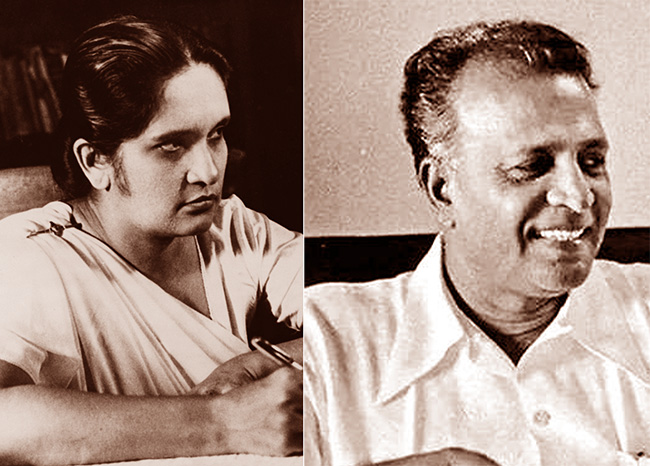
By Uditha Devapriya
On June 7, 1964, the Central Committee of the Lanka Sama Samaja Party convened a special conference at which three resolutions were presented. The first, moved by N. M. Perera, called for a coalition with the SLFP, inclusive of any ministerial portfolios. The second, led by the likes of Colvin R. de Silva, Leslie Goonewardena, and Bernard Soysa, advocated a line of critical support for the SLFP, but without entering into a coalition. The third, supported by the likes of Edmund Samarakkody and Bala Tampoe, rejected any form of compromise with the SLFP and argued that the LSSP should remain an independent party.
The conference was held a year after three parties – the LSSP, the Communist Party, and Philip Gunawardena’s Mahajana Eksath Peramuna – had founded a United Left Front. The ULF’s formation came in the wake of a spate of strikes against the Sirimavo Bandaranaike government. The previous year, the Ceylon Transport Board had waged a 17-day strike, and the harbour unions a 60-day strike. In 1963 a group of working-class organisations, calling itself the Joint Committee of Trade Unions, began mobilising itself. It soon came up with a common programme, and presented a list of 21 radical demands.
In response to these demands, Bandaranaike eventually supported a coalition arrangement with the left. In this she was opposed, not merely by the right-wing of her party, led by C. P. de Silva, but also those in left parties opposed to such an agreement, including Bala Tampoe and Edmund Samarakkody. Until then these parties had never seen the SLFP as a force to reckon with: Leslie Goonewardena, for instance, had characterised it as “a Centre Party with a programme of moderate reforms”, while Colvin R. de Silva had described it as “capitalist”, no different to the UNP and by default as bourgeois as the latter.
The LSSP’s decision to partner with the government had a great deal to do with its changing opinions about the SLFP. This, in turn, was influenced by developments abroad. In 1944, the Fourth International, which the LSSP had affiliated itself with in 1940 following its split with the Stalinist faction, appointed Michel Pablo as its International Secretary. After the end of the war, Pablo oversaw a shift in the Fourth International’s attitude to the Soviet states in Eastern Europe. More controversially, he began advocating a strategy of cooperation with mass organisations, regardless of their working-class or radical credentials.
Pablo argued that from an objective perspective, tensions between the US and the Soviet Union would lead to a “global civil war”, in which the Soviet Union would serve as a midwife for world socialist revolution. In such a situation the Fourth International would have to take sides. Here he advocated a strategy of entryism vis-à-vis Stalinist parties: since the conflict was between Stalinist and capitalist regimes, he reasoned, it made sense to see the former as allies. Such a strategy would, in his opinion, lead to “integration” into a mass movement, enabling the latter to rise to the level of a revolutionary movement.

Though controversial, Pablo’s line is best seen in the context of his times. The resurgence of capitalism after the war, and the boom in commodity prices, had a profound impact on the course of socialist politics in the Third World. The stunted nature of the bourgeoisie in these societies had forced left parties to look for alternatives. For a while, Trotsky had been their guide: in colonial and semi-colonial societies, he had noted, only the working class could be expected to see through a revolution. This entailed the establishment of workers’ states, but only those arising from a proletarian revolution: a proposition which, logically, excluded any compromise with non-radical “alternatives” to the bourgeoisie.
To be sure, the Pabloites did not waver in their support for workers’ states. However, they questioned whether such states could arise only from a proletarian revolution. For obvious reasons, their reasoning had great relevance for Trotskyite parties in the Third World. The LSSP’s response to them showed this well: while rejecting any alliance with Stalinist parties, the LSSP sympathised with the Pabloites’ advocacy of entryism, which involved a strategic orientation towards “reformist politics.” For the world’s oldest Trotskyite party, then going through a series of convulsions, ruptures, and splits, the prospect of entering the reformist path without abandoning its radical roots proved to be welcoming.
Writing in the left-wing journal Community in 1962, Hector Abhayavardhana noted some of the key concerns that the party had tried to resolve upon its formation. Abhayavardhana traced the LSSP’s origins to three developments: international communism, the freedom struggle in India, and local imperatives. The latter had dictated the LSSP’s manifesto in 1936, which included such demands as free school books and the use of Sinhala and Tamil in the law courts. Abhayavardhana suggested, correctly, that once these imperatives changed, so would the party’s focus, though within a revolutionary framework. These changes would be contingent on two important factors: the establishment of universal franchise in 1931, and the transfer of power to the local bourgeoisie in 1948.
Paradoxical as it may seem, the LSSP had entered the arena of radical politics through the ballot box. While leading the struggle outside parliament, it waged a struggle inside it also. This dual strategy collapsed when the colonial government proscribed the party and the D. S. Senanayake government disenfranchised plantation Tamils. Suffering two defeats in a row, the LSSP was forced to think of alternatives. That meant rethinking categories such as class, and grounding them in the concrete realities of the country.
This was more or less informed by the irrelevance of classical and orthodox Marxian analysis to the situation in Sri Lanka, specifically to its rural society: with a “vast amorphous mass of village inhabitants”, Abhayavardhana observed, there was no real basis in the country for a struggle “between rich owners and the rural poor.” To complicate matters further, reforms like the franchise and free education, which had aimed at the emancipation of the poor, had in fact driven them away from “revolutionary inclinations.” The result was the flowering of a powerful rural middle-class, which the LSSP, to its discomfort, found it could not mobilise as much as it had the urban workers and plantation Tamils.
Where else could the left turn to? The obvious answer was the rural peasantry. But the rural peasantry was in itself incapable of revolution, as Hector Abhayavardhana has noted only too clearly. While opposing the UNP’s Westernised veneer, it did not necessarily oppose the UNP’s overtures to Sinhalese nationalism. As historians like K. M. de Silva have observed, the leaders of the UNP did not see their Westernised ethos as an impediment to obtaining support from the rural masses. That, in part at least, was what motivated the Senanayake government to deprive Indian estate workers of their most fundamental rights, despite the existence of pro-minority legal safeguards in the Soulbury Constitution.
To say this is not to overlook the unique character of the Sri Lankan rural peasantry and petty bourgeoisie. Orthodox Marxists, not unjustifiably, characterise the latter as socially and politically conservative, tilting more often than not to the right. In Sri Lanka, this has frequently been the case: they voted for the UNP in 1948 and 1952, and voted en masse against the SLFP in 1977. Yet during these years they also tilted to the left, if not the centre-left: it was the petty bourgeoisie, after all, which rallied around the SLFP, and supported its more important reforms, such as the nationalisation of transport services.
One must, of course, be wary of pasting the radical tag on these measures and the classes that ostensibly stood for them. But if the Trotskyite critique of the bourgeoisie – that they were incapable of reform, even less revolution – holds valid, which it does, then the left in the former colonies of the Third World had no alternative but to look elsewhere and to be, as Abhayavardhana noted, “practical men” with regard to electoral politics. The limits within which they had to work in Sri Lanka meant that, in the face of changing dynamics, especially among the country’s middle-classes, they had to change their tactics too.
Meanwhile, in 1953, the Trotskyite critique of Pabloism culminated with the publication of an Open Letter by James Cannon, of the US Socialist Workers’ Party. Cannon criticised the Pabloite line, arguing that it advocated a policy of “complete submission.” The publication of the letter led to the withdrawal of the International Committee of the Fourth International from the International Secretariat. The latter, led by Pablo, continued to influence socialist parties in the Third World, advocating temporary alliances with petty bourgeois and centrist formations in the guise of opposing capitalist governments.
For the LSSP, this was a much-needed opening. Even as late as 1954, three years after S. W. R. D. Bandaranaike formed the SLFP, the LSSP continued to characterise the latter as the alternative bourgeois party in Ceylon. Yet this did not deter it from striking up no contest pacts with Bandaranaike at the 1956 election, a strategy that went back to November 1951, when the party requested the SLFP to hold a discussion about the possibility of eliminating contests in the following year’s elections. Though it extended critical support to the MEP government in 1956, the LSSP opposed the latter once it enacted emergency measures in 1957, mobilising trade union action for a period of three years.
At the 1960 election the LSSP contested separately, with the slogan “N. M. for P.M.” Though Sinhala nationalism no longer held sway as it had in 1956, the LSSP found itself reduced to a paltry 10 seats. It was against this backdrop that it began rethinking its strategy vis-à-vis the ruling party. At the throne speech in April 1960, Perera openly declared that his party would not stabilise the SLFP. But a month later, in May, he called a special conference, where he moved a resolution for a coalition with the party. As T. Perera has noted in his biography of Edmund Samarakkody, the response to the resolution unearthed two tendencies within the oppositionist camp: the “hardliners” who opposed any compromise with the SLFP, including Samarakkody, and the “waverers”, including Leslie Goonewardena.
These tendencies expressed themselves more clearly at the 1964 conference. While the first resolution by Perera called for a complete coalition, inclusive of Ministries, and the second rejected a coalition while extending critical support, the third rejected both tactics. The outcome of the conference showed which way these tendencies had blown since they first manifested four years earlier: Perera’s resolution obtained more than 500 votes, the second 75 votes, the third 25. What the anti-coalitionists saw as the “Great Betrayal” of the LSSP began here: in a volte-face from its earlier position, the LSSP now held the SLFP as a party of a radical petty bourgeoisie, capable of reform.
History has not been kind to the LSSP’s decision. From 1970 to 1977, a period of less than a decade, these strategies enabled it, as well as the Communist Party, to obtain a number of Ministries, as partners of a petty bourgeois establishment. This arrangement collapsed the moment the SLFP turned to the right and expelled the left from its ranks in 1975, in a move which culminated with the SLFP’s own dissolution two years later.
As the likes of Samarakkody and Meryl Fernando have noted, the SLFP needed the LSSP and Communist Party, rather than the other way around. In the face of mass protests and strikes in 1962, the SLFP had been on the verge of complete collapse. The anti-coalitionists in the LSSP, having established themselves as the LSSP-R, contended later on that the LSSP could have made use of this opportunity to topple the government.
Whether or not the LSSP could have done this, one can’t really tell. However, regardless of what the LSSP chose to do, it must be pointed out that these decades saw the formation of several regimes in the Third World which posed as alternatives to Stalinism and capitalism. Moreover, the LSSP’s decision enabled it to see through certain important reforms. These included Workers’ Councils. Critics of these measures can point out, as they have, that they could have been implemented by any other regime. But they weren’t. And therein lies the rub: for all its failings, and for a brief period at least, the LSSP-CP-SLFP coalition which won elections in 1970 saw through something of a revolution in the country.
The writer is an international relations analyst, researcher, and columnist based in Sri Lanka who can be reached at udakdev1@gmail.com
-
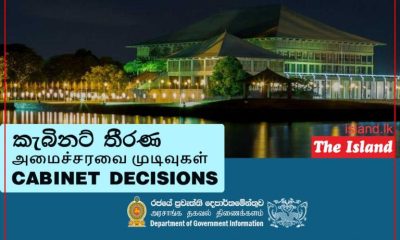
 Business7 days ago
Business7 days agoCabinet approves establishment of two 50 MW wind power stations in Mullikulum, Mannar region
-

 Features4 days ago
Features4 days agoWhy Sri Lanka Still Has No Doppler Radar – and Who Should Be Held Accountable
-

 Features6 days ago
Features6 days agoDitwah: A Country Tested, A People United
-

 News6 days ago
News6 days agoRs 1. 3 bn yahapalana building deal under investigation
-
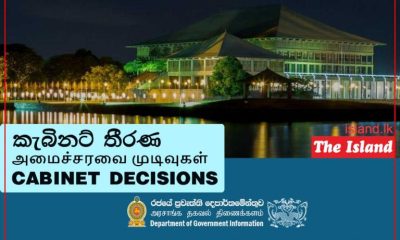
 News7 days ago
News7 days agoCabinet approves the transfer of the constructions and land reserved for the Kiinniya University to the Ministry of Foreign Affairs, Foreign Employment, and Tourism
-

 News6 days ago
News6 days agoFormer SAARC SG Esala Weerakoon calls for ‘South Asian Climate Compact’
-

 Business6 days ago
Business6 days agoFluctuating fortunes for bourse in the wake of selling pressure
-

 Opinion6 days ago
Opinion6 days agoComfort for some, death for others: The reality of climate change













